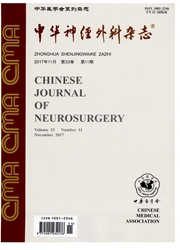

 中文摘要:
中文摘要:
目的探讨支架置入对颅内动脉分叉部动脉瘤血流动力学的影响。方法设计颅内分叉部动脉瘤的聚酯玻璃及计算机三维数值模型,通过体外循环技术和计算流体力学技术两种方法来比较支架置入前后动脉瘤的血流动力学变化。结果体外循环模拟实验的结果与计算流体力学数值模拟的结果具有较好的一致性。支架置入弱化了瘤颈处的涡流运动并减轻了血液对瘤体侧壁的冲击。支架置入后,动脉瘤瘤颈处平均剪切力降低22.3%,瘤顶处平均剪切力增高44.9%,但瘤顶处剪切力仍低于瘤颈处。结论支架置入带来的动脉瘤瘤内血流动力学参数的改变,可能有利于瘤内的血栓形成和减少治疗后的复发。
 英文摘要:
英文摘要:
Objective To investigate the hemodynamic effects of stenting on intracranial bifurcation aneurysms. Method The stented and nonstented plexiglass aneurismal models were made and their three - dimensional(3D) computational models were constructed. Flow dynamics in stented and nonstented models were studied by flow visualization and computational fluid dynamics (CFD) simulations in vitro. Results The results of blood circulation experiment in vitro were consistent with the results of CFD simulations. The stent deployment alleviated the vortex in the neck of the aneurysm and the impact on the aneurysm sac. The Wall Shear Stress(WSS) at the neck of the aneurysm decreased 22. 3% while that at the top of aneurysm increased 44. 9% after the deployment of stents. But the value of WSS at the top was still lower than that at the neck of aneurysm. Conclusions Aneurysmal hemodynamic parameters were modified by the deployment of stent, which might be beneficial to thrombosis in aneurysm sac and reduction of recurrence rate of aneurysms after interventional therapy.
 同期刊论文项目
同期刊论文项目
 同项目期刊论文
同项目期刊论文
 Reverse Engineering in the Construction of Numerical Simulation Oriented Patient-Specific Model of S
Reverse Engineering in the Construction of Numerical Simulation Oriented Patient-Specific Model of S The effect of aneurismal-wall mechanical properties on patient-specific hemodynamic simulations: two
The effect of aneurismal-wall mechanical properties on patient-specific hemodynamic simulations: two 期刊信息
期刊信息
